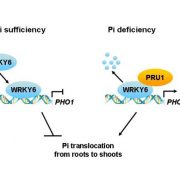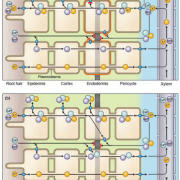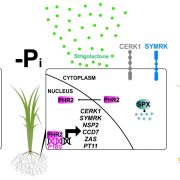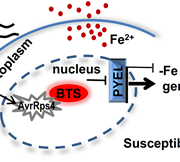The Nagoya Protocol and nitrogen-fixing maize: Close encounters between Indigenous Oaxacans and the men from Mars (Inc.)
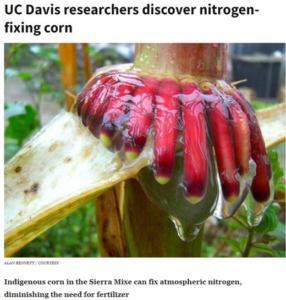 Most readers recognize the photograph of the amazing nitrogen-fixing maize, with its red, slimy aerial roots that nurture nitrogen-fixing bacteria. But I suspect few of us have thought about how this landrace came to the attention of the mainstream media, who owns the rights to it, and how it would be exploited and by whom. Those stories are found in this new article by Kloppenburg et al., which uses it as a case study to explore the wrong and right way to recognize and compensate Indigenous and local people for their natural resources and knowledge. The history of plant science is replete with knowledge and plant material taken without credit, recognition, or compensation (see Mabry et al., 2023), a practice sometimes called biopiracy, but many of these stories are from the distant past. What makes this article particularly relevant and important for teaching is that it describes a problematic and a very recent occurrence, one post-awareness of biopiracy and after adoption of the Nagoya Protocol (fully, the Nagoya Protocol on Access to Genetic Resources and the Fair and Equitable Sharing of Benefits Arising from Their Utilization). Although the nitrogen-fixing maize was accessed and utilized in compliance with the Nagoya Protocol, the authors point out that the process was neither equitable nor fair to those who have cultivated it for generations. The article presents the process through which the agreement was made, highlighting the ambiguities of Nagoya, and offers alternative strategies to allow this intriguing and potentially impactful trait to be studied. I encourage you to read this, and particularly to share this important lesson with students. (Summary by Mary Williams @PlantTeaching) Elemanta https://doi.org/10.1525/elementa.2023.00115
Most readers recognize the photograph of the amazing nitrogen-fixing maize, with its red, slimy aerial roots that nurture nitrogen-fixing bacteria. But I suspect few of us have thought about how this landrace came to the attention of the mainstream media, who owns the rights to it, and how it would be exploited and by whom. Those stories are found in this new article by Kloppenburg et al., which uses it as a case study to explore the wrong and right way to recognize and compensate Indigenous and local people for their natural resources and knowledge. The history of plant science is replete with knowledge and plant material taken without credit, recognition, or compensation (see Mabry et al., 2023), a practice sometimes called biopiracy, but many of these stories are from the distant past. What makes this article particularly relevant and important for teaching is that it describes a problematic and a very recent occurrence, one post-awareness of biopiracy and after adoption of the Nagoya Protocol (fully, the Nagoya Protocol on Access to Genetic Resources and the Fair and Equitable Sharing of Benefits Arising from Their Utilization). Although the nitrogen-fixing maize was accessed and utilized in compliance with the Nagoya Protocol, the authors point out that the process was neither equitable nor fair to those who have cultivated it for generations. The article presents the process through which the agreement was made, highlighting the ambiguities of Nagoya, and offers alternative strategies to allow this intriguing and potentially impactful trait to be studied. I encourage you to read this, and particularly to share this important lesson with students. (Summary by Mary Williams @PlantTeaching) Elemanta https://doi.org/10.1525/elementa.2023.00115


